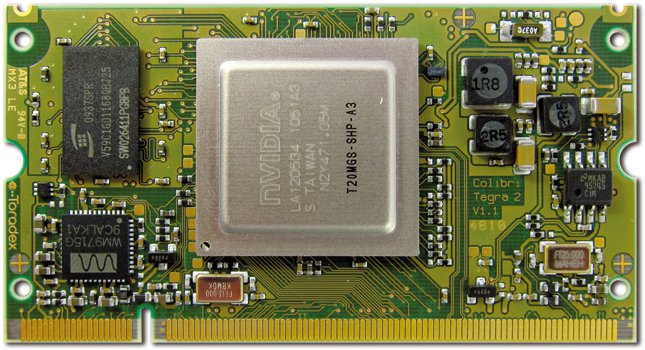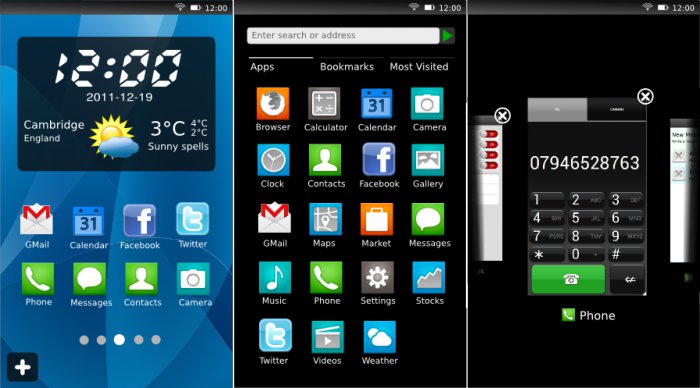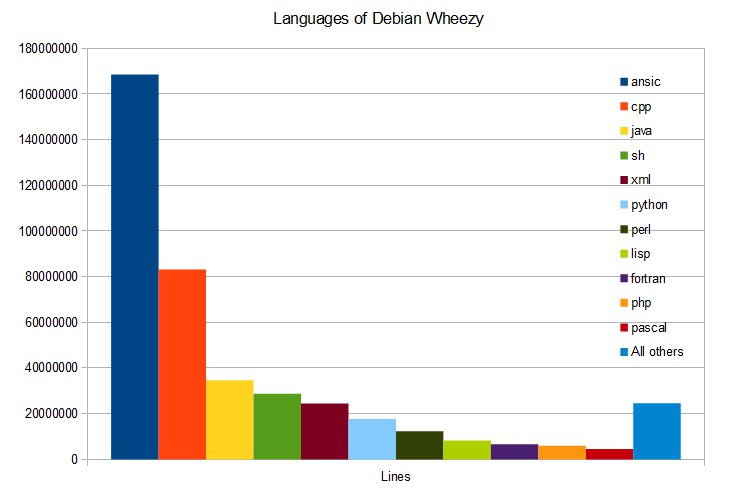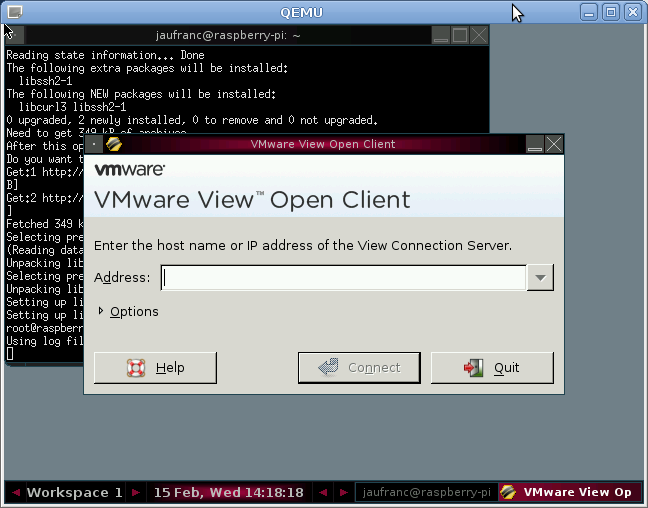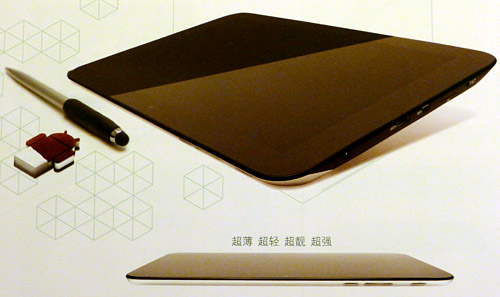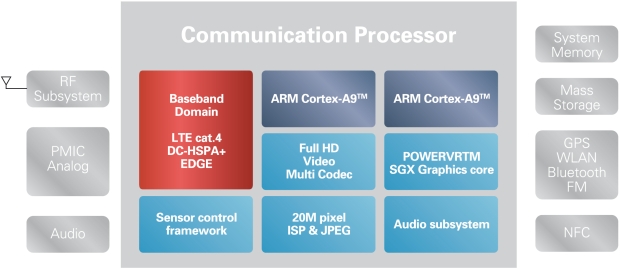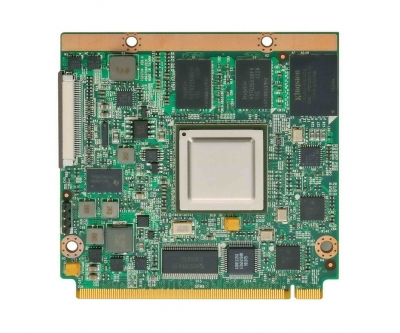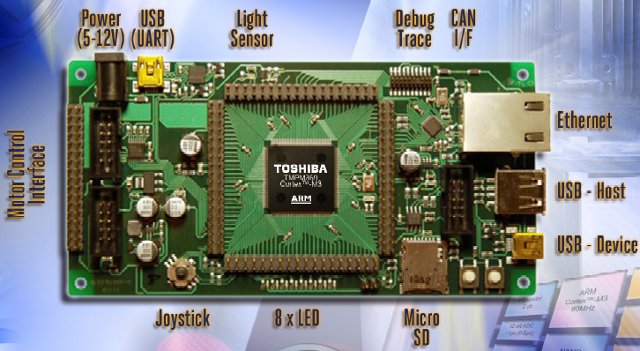Toradex, a Swiss technology company specialized in embedded systems, will be at Embedded World 2012 to showcase their products and technology including: An Embedded Computer Kit with Colibri T20 (Nvidia Tegra 2 Computer on Module) and Iris carrier board. Instant boot demo (480 ms) in WinCE with their NVidia COM The new Colibri T30 COM powered by Nvidia Tegra 3 (Quad-core Cortex A9 processor) At the conference, they will give away 100 Embedded Computer Kits (they also call it “Performance Kit”) based on Colibri T20 and Iris board to the attendees who give 20 Euros to the Red Cross. The regular price of this kit is 200 Euros. This embedded module comes preloaded with Windows Embedded Compact 7 , but you can download the Linux BSP and update the board firmware. The Colibri T20 key features include: Dual Core Nvidia Tegra 2 ARM Cortex A9 Processor @ 1 Ghz 256 […]
Mozilla Boot to Gecko (B2G) OS Is Coming to Your Smartphone
Mozilla, non-profit organization, well known for its Firefox web browser and Thunderbird mail client has recently moved to the mobile space with Firefox for Android browser for smartphones and tablets. However they intend to go even further by releasing a mobile operating systems named Boot to Gecko (B2G) competing directly with Android, iOS and Windows Phone. Mozilla mobile operating system will use web standards (like Tizen does) and the goal is to displace proprietary, single-vendor stacks for application development (e.g. Android, iOS, WP7). The OS itself will relies on the Linux kernel and some open source libraries and the B2G applications will be written using HTML5/Javascript/CSS3 standard. Basically, it will boot Linux and use the Gecko engine (like in Firefox) to render application in a way similar to what Google does with Chrome OS. The HTML5-based user interface of B2G is called Gaia and is a collection of web apps. […]
Debian is Worth a Lot (Yet it’s Free) and C/C++ Language Still Rules
James E. Bromberger (JEB) , a contributor to Perl CPAN and Debian, has estimated the cost of developing Debian Wheezy (7.0) from scratch based on the the number of lines of code (LOC) counted with SLOCCount tool, the Constructive Cost Model (COCOMO) and the average wage of a developer of 72,533 USD (using median estimates from Salary.com and PayScale.com for 2011). He found 419,776,604 lines of code in 31 programming languages giving an estimated cost of producing Debian Wheezy in February 2012 of 19 billion US dollar (14.4 Billion Euros), making each package source code (out of the 17,141 packages) worth an average of 1,112,547.56 USD to produce. He also estimated the cost of Linux 3.1.8 Kernel with almost 10 millions lines of source code would be worth 540 million USD at standard complexity, or 1.877 billions USD when rated as ‘complex’. I don’t know which tool he used for […]
Cross-compiling VMWare View for ARM Linux (in Debian/Ubuntu)
Earlier this month, I wrote an article about PCoIP Technology which shows an Android application (VMWare View) running on an OMAP4 Tablet displaying a Windows 7 desktop. This remote desktop technology relies on a powerful server to do the processing and thin clients (in that case Tablets) to display the desktop. Since only pixels are transferred any OS (supported by the server) could be displayed in the thin client. That made me wonder if there was an open source PCoIP client that could run on low end Linux client such as the Raspberry Pi. VMWare View Open Client provides just what we need, but is only available in source code so we need to cross-compile it for ARM or build it in an ARM machine. Today, I’ll show the instructions I followed to cross-compile it for ARM in Debian using Emdebian Toolchain. First download and extract VMware View Open Client […]
Ziilabs Unveils HanZpad Android 4.0 Tablet Reference Design
ZiiLABS, a subsidiary of Creative Technology, has announced the HanZpad platform, a tablet reference design based on ZiiLABS ZMS-40 StemCell Media Processor (4 ARM Cortex A9 cores and 96 GPU cores) optimized for Android 4.x (ICS) and a Chinese operating system. The HanZpad platform is built around Ziilabs ZMS-40 processors with four 1.5GHz ARM Cortex-A9 CPUs and 96-core for the GPU. The ZMS-40 SoC supports H.264 HP decoding of up to 3840×1080 for true 1080p 3D stereo, and 2560×1600 (WQXGA) display resolution support. The firmware can also be upgraded to support for High Efficiency Video Coding (HEVC) aka H.265 which can increase data compression ratio by up to 2 times compared to H.264. Beyond the ZMS-40 processor, the key features of the tablet are as follows: 10.1-inch, 1,280 x 800-pixels IPS panel 1GB memory micro SDHC slot (up to 64GB) Wi-Fi and Bluetooth connectivity 22-hour battery life (~1W power consumption) […]
Renesas Mobile Introduces Dual Core MP5232 SoC for Mid-range LTE Smartphones
Renesas has announced the availability of the MP5232, a dual core Cortex A9 @ 1.5 Ghz single-chip optimized to address the 150-300 USD LTE smartphones market. The MP5232 platform is designed to enable OEMs to accelerate the creation and delivery of high volume LTE/HSPA+ capable smartphones, tablets and mobile Internet devices the industry requires to deliver the full potential of LTE, says the company. Jean-Marie Rolland, CTO and Executive Vice President of Sales and Marketing for Renesas Mobile Corporation explains: “We are seeing a number of US$600+ LTE super phone devices being launched in the market, but the industry needs a wider penetration of LTE devices for the business case for LTE to pay off.” The platform supports multi-camera (up to 20MPixel) and multi-display support, full HD 1080p multi-format video encoding/decoding, stereoscopic 3D (S3D) video and advanced graphics via a PowerVR SGX GPU to deliver a console-like gaming experiences and […]
GreenBase GQ-3874 and CG-8148 TI ARM Cortex A8 QSeven Modules
GreenBase Technology has unveiled the GQ-3874 and GQ-8148 Qseven modules based on Texas Instruments Cortex A8 processors. The GQ-3874/8148 features a PCI-e slot, SATA, four USB, four UART, dual CAN bus, ARM Cortex A8 1GHz processor, and SGX530 3D graphics engine. The GQ-3874 – Qseven Module uses the following CPU and GPU: CPU – Texas Instruments Sitara AM3874 1GHz ARM Cortex-A8 MPU GPU – SGX530 3D Graphics Engine and the GQ-8148 – Qseven Module uses the following CPU, GPU, DSP and Video hardware accelerator: CPU – Texas Instruments DaVinci DM8148 1GHz ARM Cortex-A8 MPU GPU – SGX530 3D Graphics Engine DSP – Integra C674 750MHz DSP HDVICP2 Video Encoder/Decoder hardware accelerator Both boards share the following specifications: Memory & Storage Onboard DDR3 Memory 512MB/1GB Onboard eMMC Flash 4GB/8GB Qseven 230 pin Edge Connector with: 2 x GbE 1 x PCIe 1 x SATA 1 x HDMI 4 x USB 2.0 […]
Toshiba Electronics BMSKTOPASM369 Starter Kit for ARM-Cortex M3 MCU
Toshiba Electronics will unveil the BMSKTOPASM369, a new Starter Kit for ARM-Cortex M3 microcontrollers at Embedded World 2012. This devkit based on Toshiba TMPM369Fxxx Cortex M3 MCU which combines Ethernet, CAN and USB Host and Device connectivity in a single IC. Toshiba will also showcase new software tools that speed-up and optimize embedded designs for motor control applications. This development board features an integrated power supply and offers rapid prototyping and testing for applications ranging from industrial control systems and barcode readers to motion control, home appliances and solar inverters. The Started Kit is based on TMPM369Fxxx series 32-bit ARM Cortex-M3 MCU running at 80MHz with up to 512KB flash and 128KB RAM. The 4 MCUs in this series also integrate the following: Single-channel CAN2.0B Full-speed USB Host controller Full-speed USB device controller 10/100BASE single-channel Ethernet MAC. 2x 12-bit ADCs suitable forbarcode readers and other applications requiring ultra-fast conversion. 2x […]


